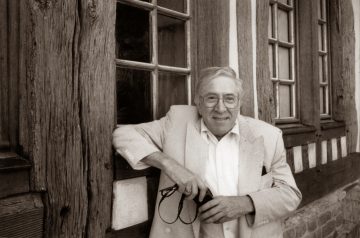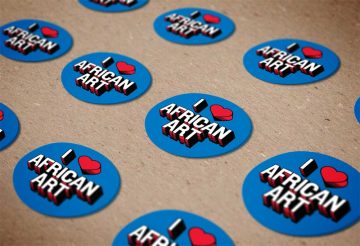On this Labor Day we remember founding director Warren M. Robbins on what would have been his 100th birthday.
 Robbins’ passion for African art, and subsequent collecting, was first ignited by the purchase of a carved Yoruba sculpture he found in Germany during his tenure as a State Department public affairs officer and cultural attaché. Returning to the United States in 1960 as the civil rights movement was emerging, Robbins proposed using African art to highlight Africa’s rich heritage and encourage conversations about race and other topics involving the continent. In 1963 he established the Center for Cross-Cultural Communication to “show the rich creative heritage of Africa, and to underscore the implications of this heritage in America’s quest for interracial understanding.” He firmly believed that increased communication would improve tolerance and understanding across diverse communities.
Robbins’ passion for African art, and subsequent collecting, was first ignited by the purchase of a carved Yoruba sculpture he found in Germany during his tenure as a State Department public affairs officer and cultural attaché. Returning to the United States in 1960 as the civil rights movement was emerging, Robbins proposed using African art to highlight Africa’s rich heritage and encourage conversations about race and other topics involving the continent. In 1963 he established the Center for Cross-Cultural Communication to “show the rich creative heritage of Africa, and to underscore the implications of this heritage in America’s quest for interracial understanding.” He firmly believed that increased communication would improve tolerance and understanding across diverse communities.
The center’s first undertaking was the creation of the Museum of African Art, the first in the United States devoted exclusively to African art. With the backing of the center’s board—including luminaries such as Saul Bellow, Joseph Campbell, William O. Douglas, Eliot Elisofon, Buckminster Fuller, S. I. Hayakawa, Langston Hughes, Hubert Humphrey, Jacob Lawrence, Margaret Mead, Ben Shahn, Adlai Stevenson, and Mike Wallace—the museum opened in 1964 in a Capitol Hill town house once owned by the abolitionist and statesman Frederick Douglass. The museum would eventually grow to fill nine row houses before becoming part of the Smithsonian Institution in 1979 as the National Museum of African Art.
Robbins’s initial vision still forms the cornerstone of the museum’s mission to inspire conversations about the beauty, power, and diversity of African art and promote cross-cultural communication.
Robbins, one of eleven children, was born in Worcester, Massachusetts, and earned a B.A. in English from University of New Hampshire and an M.A. in history and cultural anthropology from University of Michigan. He was the recipient of many honors and awards, including the dedication of the Robbins Center for Graduate Studies at the University of Michigan School of Art and Design (1966). Robbins held honorary doctorates from Frostburg State University, University of New Hampshire, International College, Los Angeles, and Lebanon Valley College. He was named Washingtonian of the Year (1975) and received the Order of Merit, Republic of Cameroon (1973), the Rothko Chapel 10th Anniversary Medal (1981), the D.C. Mayor’s Arts Award (1986), the Public Humanities Award from the Washington Humanities Council (1990), the Aggrey Medal from the Phelps-Stokes Foundation (1993), and the University of Michigan Alumni Outstanding Achievement Award (1994).
We look forward to exploring his legacy during our observance of the museum’s 60th anniversary in 2024.
